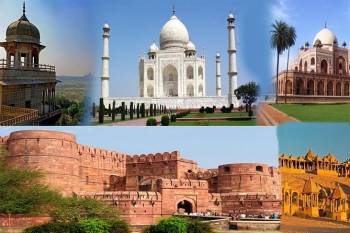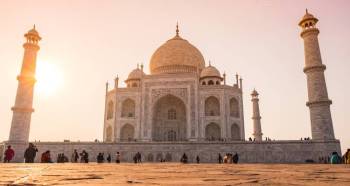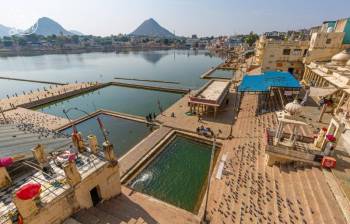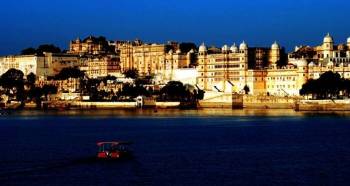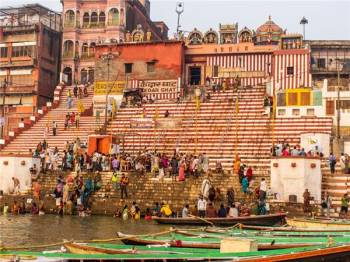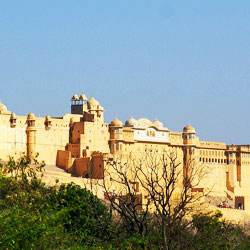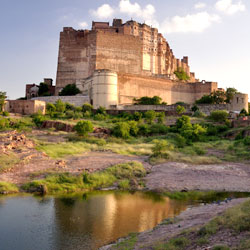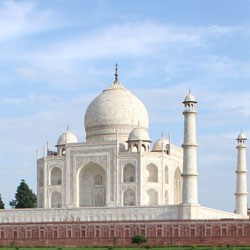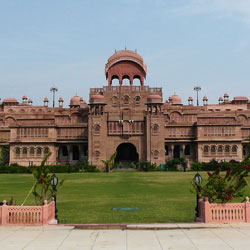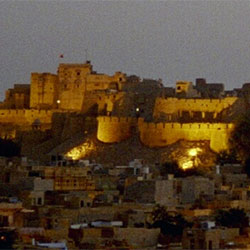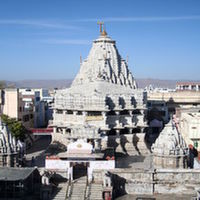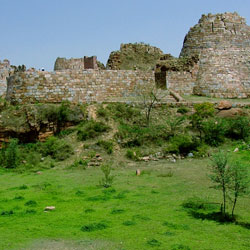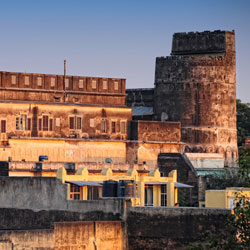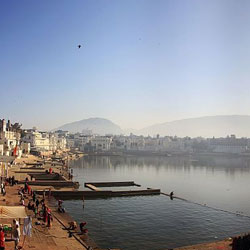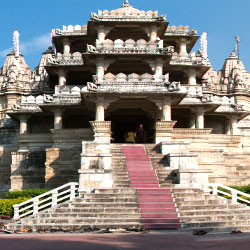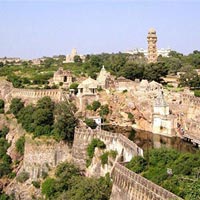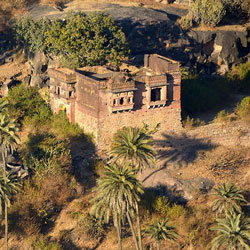Golden Triangle Tour 5Night - 6Days
Link Copied
Duration : 5 Nights / 6 Days
Destination Covered : New Delhi, Jaipur, Agra, Hawa Mahal, Amer Fort, Taj Mahal, Agra Fort, Moti Masjid, Akshardham Temple, Buland Darwaza, Fatehpur Sikri, Amber Fort, City Palace, India Gate, Lotus Temple
Tour Activities : Forts and Palaces
Tour Themes : Religious & Pilgrimage, Culture & Heritage, Monuments & Historical Places
Price on Request
New Delhi, Jaipur and Agra Tour Itinerary
Day 1
Morning: Pickup from Delhi (hotel/airport/station).
Drive to Jaipur, the capital of Rajasthan (founded in 1727 by Maharaja Sawai Jai Singh II).
Check-in at hotel, rest.
Evening (optional):
Visit local markets (Johari Bazaar, Bapu Bazaar).
Optional dinner at Chokhi Dhani, an ethnic Rajasthani village-style resort with folk performances.
Overnight: Jaipur
Drive to Jaipur, the capital of Rajasthan (founded in 1727 by Maharaja Sawai Jai Singh II).
Check-in at hotel, rest.
Evening (optional):
Visit local markets (Johari Bazaar, Bapu Bazaar).
Optional dinner at Chokhi Dhani, an ethnic Rajasthani village-style resort with folk performances.
Overnight: Jaipur
Day 2
Amber Fort (Amer Fort)
Built in the late 16th century by Raja Man Singh I and later expanded by Mirza Raja Jai Singh, this majestic fort blends Rajput and Mughal architecture. The fort includes:
Sheesh Mahal (Hall of Mirrors): Designed to sparkle even with a single lamp.
Sukh Niwas: Water channels for passive air-cooling.
Diwan-i-Aam & Ganesh Pol: Audience hall and stunning entrance gate.
Jal Mahal (Water Palace) (Photo stop)
Built in the 18th century by Maharaja Madho Singh I in the center of Man Sagar Lake. It appears to float on water and is not open for interior visits.
City Palace, Jaipur
Constructed by Sawai Jai Singh II. It remains the residence of the Jaipur royal family. Key highlights:
Mubarak Mahal: Museum of royal textiles.
Chandra Mahal: Still partially inhabited by the royal family.
Beautiful courtyards, peacock gate, armory museum.
Jantar Mantar (UNESCO Site)
An astronomical observatory built in 1734 by Maharaja Jai Singh II.
Houses the world’s largest stone sundial. The instruments measure time, declination of planets, and celestial coordinates.
Hawa Mahal (Palace of Winds) (Photo stop)
Built in 1799 by Maharaja Pratap Singh.
Its 953 small windows allowed royal women to observe street festivals without being seen. The façade mimics Lord Krishna’s crown.
Overnight: Jaipur
Built in the late 16th century by Raja Man Singh I and later expanded by Mirza Raja Jai Singh, this majestic fort blends Rajput and Mughal architecture. The fort includes:
Sheesh Mahal (Hall of Mirrors): Designed to sparkle even with a single lamp.
Sukh Niwas: Water channels for passive air-cooling.
Diwan-i-Aam & Ganesh Pol: Audience hall and stunning entrance gate.
Jal Mahal (Water Palace) (Photo stop)
Built in the 18th century by Maharaja Madho Singh I in the center of Man Sagar Lake. It appears to float on water and is not open for interior visits.
City Palace, Jaipur
Constructed by Sawai Jai Singh II. It remains the residence of the Jaipur royal family. Key highlights:
Mubarak Mahal: Museum of royal textiles.
Chandra Mahal: Still partially inhabited by the royal family.
Beautiful courtyards, peacock gate, armory museum.
Jantar Mantar (UNESCO Site)
An astronomical observatory built in 1734 by Maharaja Jai Singh II.
Houses the world’s largest stone sundial. The instruments measure time, declination of planets, and celestial coordinates.
Hawa Mahal (Palace of Winds) (Photo stop)
Built in 1799 by Maharaja Pratap Singh.
Its 953 small windows allowed royal women to observe street festivals without being seen. The façade mimics Lord Krishna’s crown.
Overnight: Jaipur
Day 3
Chand Baori (Abhaneri Stepwell)
Located in the village of Abhaneri, this is one of India’s oldest and deepest stepwells, built in the 8th–9th century by King Chanda of the Nikumbh dynasty.
13 stories and over 3,500 perfectly symmetrical steps.
Designed for water harvesting and cooling in the harsh desert climate.
Nearby: Harshat Mata Temple, also 9th century.
Fatehpur Sikri (UNESCO World Heritage Site)
Built in 1571 by Emperor Akbar as the Mughal capital.
Key Sites:
Buland Darwaza: 54-meter-high gateway built to commemorate Akbar’s Gujarat victory.
Jama Masjid: One of the largest mosques of the time.
Tomb of Salim Chishti: Akbar sought blessings from this Sufi saint for a son.
Diwan-i-Khas: Hall of private audience with a unique central pillar.
Panch Mahal: A 5-storey wind-catching palace for the royal women.
Overnight: Agra
Located in the village of Abhaneri, this is one of India’s oldest and deepest stepwells, built in the 8th–9th century by King Chanda of the Nikumbh dynasty.
13 stories and over 3,500 perfectly symmetrical steps.
Designed for water harvesting and cooling in the harsh desert climate.
Nearby: Harshat Mata Temple, also 9th century.
Fatehpur Sikri (UNESCO World Heritage Site)
Built in 1571 by Emperor Akbar as the Mughal capital.
Key Sites:
Buland Darwaza: 54-meter-high gateway built to commemorate Akbar’s Gujarat victory.
Jama Masjid: One of the largest mosques of the time.
Tomb of Salim Chishti: Akbar sought blessings from this Sufi saint for a son.
Diwan-i-Khas: Hall of private audience with a unique central pillar.
Panch Mahal: A 5-storey wind-catching palace for the royal women.
Overnight: Agra
Day 4
Taj Mahal (UNESCO World Heritage Site)
Visit at sunrise for best light and fewer crowds.
Built from 1631–1648 by Emperor Shah Jahan in memory of Mumtaz Mahal.
It’s a symbol of eternal love, made of white marble.
Intricate pietra dura (stone inlay) and calligraphy.
Gardens based on Persian Charbagh layout.
Declared a World Wonder.
Agra Fort (UNESCO Site)
Constructed by Akbar in 1565, later renovated by Shah Jahan.
Diwan-i-Aam and Diwan-i-Khas: Halls of public and private audiences.
Jahangiri Mahal: Fusion of Hindu and Central Asian architecture.
Musamman Burj: Where Shah Jahan was imprisoned, gazing at the Taj.
Moti Masjid: "Pearl Mosque", built of white marble.
Optional: Mehtab Bagh
Garden on the opposite side of the Yamuna River from Taj Mahal. Offers sunset views of the monument.
Overnight: Agra
Visit at sunrise for best light and fewer crowds.
Built from 1631–1648 by Emperor Shah Jahan in memory of Mumtaz Mahal.
It’s a symbol of eternal love, made of white marble.
Intricate pietra dura (stone inlay) and calligraphy.
Gardens based on Persian Charbagh layout.
Declared a World Wonder.
Agra Fort (UNESCO Site)
Constructed by Akbar in 1565, later renovated by Shah Jahan.
Diwan-i-Aam and Diwan-i-Khas: Halls of public and private audiences.
Jahangiri Mahal: Fusion of Hindu and Central Asian architecture.
Musamman Burj: Where Shah Jahan was imprisoned, gazing at the Taj.
Moti Masjid: "Pearl Mosque", built of white marble.
Optional: Mehtab Bagh
Garden on the opposite side of the Yamuna River from Taj Mahal. Offers sunset views of the monument.
Overnight: Agra
Day 5
Drive to Delhi. After check-in, explore historical monuments:
Humayun’s Tomb (UNESCO Site)
Built in 1570 by Empress Hamida Banu Begum, wife of Humayun.
First garden tomb in the Indian subcontinent.
Influenced later Mughal architecture (especially Taj Mahal).
Qutub Minar (UNESCO Site)
Started in 1192 by Qutb-ud-din Aibak, completed by Iltutmish.
73-meter-high tower, made of red sandstone.
Marks the beginning of Islamic rule in India.
Adjacent: Quwwat-ul-Islam Mosque, Iron Pillar (resistant to rust).
🇮🇳 India Gate & Rajpath
42-meter-high war memorial built in 1931 to honor soldiers of the British Indian Army who died in WWI.
President’s House & Parliament House (Drive past)
Designed by Edwin Lutyens during British rule (1911-1931).
Lotus Temple or Gurudwara Bangla Sahib (Optional)
Lotus Temple: Bahá’í House of Worship known for its lotus-like architecture.
Bangla Sahib: Historic Sikh shrine, associated with Guru Har Krishan.
Overnight: Delhi
Humayun’s Tomb (UNESCO Site)
Built in 1570 by Empress Hamida Banu Begum, wife of Humayun.
First garden tomb in the Indian subcontinent.
Influenced later Mughal architecture (especially Taj Mahal).
Qutub Minar (UNESCO Site)
Started in 1192 by Qutb-ud-din Aibak, completed by Iltutmish.
73-meter-high tower, made of red sandstone.
Marks the beginning of Islamic rule in India.
Adjacent: Quwwat-ul-Islam Mosque, Iron Pillar (resistant to rust).
🇮🇳 India Gate & Rajpath
42-meter-high war memorial built in 1931 to honor soldiers of the British Indian Army who died in WWI.
President’s House & Parliament House (Drive past)
Designed by Edwin Lutyens during British rule (1911-1931).
Lotus Temple or Gurudwara Bangla Sahib (Optional)
Lotus Temple: Bahá’í House of Worship known for its lotus-like architecture.
Bangla Sahib: Historic Sikh shrine, associated with Guru Har Krishan.
Overnight: Delhi
Day 6
Depending on flight/train schedule, optional visit to:
Akshardham Temple: Spiritual-cultural complex built in 2005.
Connaught Place for last-minute shopping.
Drop-off at Delhi Airport / Railway Station / Hotel.
Akshardham Temple: Spiritual-cultural complex built in 2005.
Connaught Place for last-minute shopping.
Drop-off at Delhi Airport / Railway Station / Hotel.
More Details about New Delhi, Jaipur and Agra Tour
Inclusions
- EP (No Meal)
Payments Terms
- * 20% Advance Percentage of total booking amount
Cancellation & Refund Policy
- * Upon cancellation, refund will be made after deducting the Retention Amount.
Fill Enquiry Form Below

